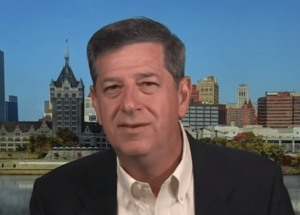
“A set of facts could be put forward that would support that (they are destroying the retail landscape),” says former Walmart CEO Bill Simon. “They’re going through another cycle of it where their CFO in the (earnings) call said we’re reinvesting to drive one-day Prime shipping. That’s going to put more pressure on retailers and give them this Sophie’s Choice. Do I want to go out of business because I’ve lost my sales by not matching them on price? Or, do I want to go out of business because I’ve matched them on price?”
Bill Simon, former CEO of Walmart, discusses how Amazon uses profits from AWS to prop up operating losses in online retail while in the process, destroying competing retail businesses, in an interview on CNBC:
Is Amazon Destroying the Retail Landscape?
They’re running their business model and they’re just doing a fantastic job of it. Who doesn’t like stuff shipped to their house for free? It’s an awesome business model. It’s going to be increasingly challenging for them though because nearly 70 percent of their operating income came from Web Services. If you filter out the operating income from web services and if you take out the operating income for advertising, then there’s a chunk of it that is made in brick and mortar through Whole Foods, or at least there was because they don’t report that anymore, their worldwide retail business is operating break-even or at a loss.
Their international business loses money on $16 billion this quarter in sales. It’s really no wonder that regulators internationally are starting to look at them. A set of facts could be put forward that would support that (they are destroying the retail landscape). Think about it, in North America, they priced at or below cost for many years and didn’t make money. It’s arguable today whether their online business makes money in North America.
This Quarter Is the Poster child For Anti-Competitive Behavior
All the while, Circuit City went out of business, Linens N Things went out of business, Toys R Us went out of business, and then Prime is the driver of it. It went from $79 to $99 to $119. That’s sort of the definition of anti-competitive behavior and anti-competitive pricing. Price below the market and when your competitors start to go out of business you ratchet up your price. This quarter is really a poster child for that. Their North American business grew $6 billion and lost money. Their operating income went down in North America.
They’re going through another cycle of it where their CFO in the (earnings) call said we’re reinvesting to drive one-day Prime shipping. That’s going to put more pressure on retailers and give them this Sophie’s Choice. Do I want to go out of business because I’ve lost my sales by not matching them on price? Or, do I want to go out of business because I’ve matched them on price? I’ve not been able to make any profit because they support their retail business with web services. It’s tough to compete with them when they’re not making money and pricing below cost with online retail.
It’s Not Possible To Do One-Hour Shipping and Make Money
Who doesn’t love stuff free shipping to your house in two days or one day or in an hour? That’s awesome. I use it all the time. Everybody does. But there are consequences to it. As the expenses go up and the price goes up, eventually, Prime has been going up in price sequentially and has to continue to go up. It’s not possible to ship things to your house in one hour and do it at the same price or cost that can make money in retail. It’s just not possible. The packaging alone, the delivery person walking from the street to your front door, start adding up the cost of all that and you can’t make money on a $3 box of breakfast cereal.
So it’s going to be tough. I don’t know that regulators will take that on given the consumers love for it. But if the retail landscape keeps getting impacted and the weaker keep dropping out and it gets down to this battle between the behemoth on the online side and Walmart on the physical side, it gets to be a complicating factor. I think then regulators have to look at it. When that happens it’s hard to tell but this quarter has really kind of the poster child for that.

